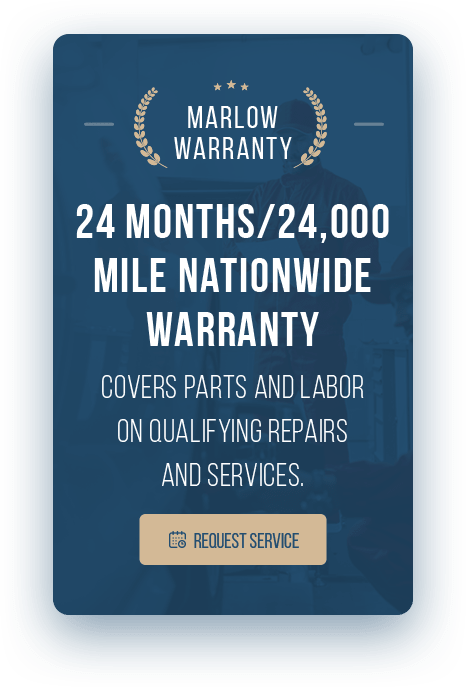Your vehicle’s safety and performance rely heavily on its braking system’s effectiveness. To ensure your brakes remain in top-notch condition, it is vital to perform regular brake service, addressing key components such as brake pads, shoes, rotors, and fluid. By staying consistent with your brake maintenance, you can avoid potentially costly repairs, extend the life of your braking system, and ultimately enjoy a safer and smoother driving experience.
This comprehensive brake service checklist from Marlow Automotive will provide you with a robust framework to ensure your vehicle maintains optimal brake performance, covering all essential aspects of brake system care. Our checklist will guide you through the inspection, maintenance, and replacement of key brake components and debunk common misconceptions and pitfalls that can impede braking efficiency. Whether you’re a seasoned driver or a novice just starting out, our ultimate brake service checklist will empower you to keep your vehicle’s brakes in peak condition, contributing to a safer and more enjoyable driving experience in 2024 and beyond.
1. Regular Brake Inspection: Staying Aware of Your Brake System's Health
A crucial component of any brake service regimen is regular brake inspections. By scheduling periodic brake checks, you can catch and address potential issues before they escalate into more significant problems. We recommend having your brake system inspected at least twice a year, or every 10,000 miles. A professional technician can assess the following elements during a brake inspection:
– Brake pads and shoes: Look for signs of wear or uneven wear patterns.
– Brake rotors and drums: Inspect for cracks, warping, or scoring.
– Brake lines and hoses: Examine for leaks, cracks, or signs of bulging.
– Brake fluid: Check fluid levels and test brake fluid quality to determine if it needs replacement.
– Brake calipers and wheel cylinders: Look for leaks or signs of damage.
2. Brake Pad and Shoe Replacement: Ensuring Consistent Stopping Power
A hallmark of proper brake maintenance is timely brake pad and shoe replacement. Worn-out brake pads and shoes decrease the efficiency of your brake system, increasing your stopping distance and potentially resulting in accidents. It is generally recommended to replace brake pads every 30,000 to 70,000 miles and brake shoes every 35,000 to 60,000 miles. However, the exact interval for replacement may vary depending on the make and model of your vehicle and your driving habits. Watch for these warning signs indicating that it’s time for brake pad or shoe replacement:
– Squealing or screeching noises when braking.
– Vibration or pulsation when braking.
– Reduced responsiveness or brake pedal feeling spongy.
– Warning light for the braking system illuminated on the dashboard.
3. Brake Rotor and Drum Care: Promoting Even Brake Wear and Performance
Another essential aspect of brake service is maintaining the rotors and drums, as they directly affect your brake system’s overall performance. Warped or damaged rotors can cause uneven brake wear, increased stopping distances, and a diminished driving experience. To ensure optimal brake rotor and drum health, implement these best practices:
– Resurface rotors: During a brake inspection, ask the technician to determine if rotor resurfacing is necessary. Resurfacing can restore the smooth surface of the rotors, promoting even brake pad wear and improving brake performance.
– Replace rotors and drums when necessary: Depending on the vehicle’s make and model, as well as driving conditions, brake rotors may need replacement every 50,000 to 70,000 miles. Drums generally have a longer lifespan and may require replacement every 100,000 miles or more. However, always refer to your vehicle’s owner’s manual for manufacturer-specific recommendations.
4. Brake Fluid Maintenance: Ensuring Optimal Brake System Efficiency
Brake fluid is the lifeblood of your vehicle’s braking system, transferring the hydraulic pressure required to engage your brakes. Over time, brake fluid can become contaminated by moisture, which can reduce its effectiveness and potentially cause damage to brake system components. To maintain optimal brake fluid quality and ensure efficient braking, follow these guidelines:
– Regularly check the brake fluid level: Consult your vehicle’s owner’s manual for the proper brake fluid level and topping-off procedures.
– Periodically flush and replace brake fluid: Most manufacturers recommend replacing brake fluid approximately every 2-3 years or 24,000 – 36,000 miles. However, consult your owner’s manual for specific recommendations based on your make and model.
Conclusion: Committing to a Routine Brake Service for a Safer and Smoother Driving Experience
By adhering to our ultimate brake service checklist, you can ensure that your vehicle’s braking system remains in top-notch condition, promoting optimal performance, safety, and longevity. Regular brake inspections, timely component replacement, and proper fluid maintenance are all essential aspects of a comprehensive brake service regimen. By staying consistent with these tasks, you can avoid costly repairs, extend your braking system’s life, and enjoy a safer and smoother driving experience.
Trust our team at Marlow Automotive for all your brake service needs, from inspections and component replacements to fluid flushes and refills. Our experienced technicians are dedicated to helping you preserve your vehicle’s brake performance and safety on the road. Contact us today to schedule your next Plano brake service appointment and experience the peace of mind that comes from knowing your vehicle’s braking system is in capable hands.



